LET’S BE FRIENDS ON PINTEREST! WE’RE ALWAYS PINNING TASTY RECIPES
Jump to:
Making Dosa Batter Perfectly with an Instant Pot
We use the Instant Pot to make perfect dosa batter every time. The Instant Pot really takes the guesswork out of making the batter and allows you to easily ferment the batter for perfect dosa every time.
Our dosas come out crispy with a fluffy inside. This is because we use a 3 to 1 ratio with the rice to dal, which helps make it extra crispy.
Our recipe is easy to follow and tastes great with your favorite sauces and gravies.
Dosa Batter Recipe Video
What is Dosa?
Dosa is a type of crepe that comes from India. The crepe is made using a batter of urad dal and rice. The batter is then fermented, which helps with digesting the lentils.
This traditional recipe is served with Sambar and chutney to really give it a great flavor. You can also stuff it with potatoes or your other favorite veggies.
Traditionally, the batter consisted only of rice. Over time, people started adding dal to batter. Check out our recipe to make crispy dosas.
What Does Dosa Taste Like?
Dosa has a generally mild sour fermented flavor, which makes it great for serving with chutney and Sambar. You can also season the dosa with spices to add a bit more flavor in the batter.
Is the Batter for Idli and Dosa the Same?
They are similar but not the same. Idli batter contains more lentils, which makes it thicker. Dosa contains more rice, and is usually thinner than idli batter. Idli batter is coarser compared to Dosa batter.
Dosa Batter Ingredients
When you make dosa batter, you’ll need:
- Idli Rice or Ponni Rice - You could use another short grained rice if you prefer.
- Urad Dal - Black lentils are the traditional lentil used.
- Fenugreek seeds / methi to help ferment.
- Thick poha - for the nice caramalized color
- Water
What Kind of Lentils to Use?
Typically, you use split black gram or urad dal to make dosa batter. Urad dal is easily available at any asian grocery store.
Best Rice for Dosa Batter
We use ponni rice or idli rice, which are short grain rice. We find these varieties yield the best results, but you could use other short grain rice if you prefer.
Dosa Batter Ratio
When making dosa batter, the ratio is 3 cups of rice to 1 cup of dal. Some recipes call for a ratio of 4 to 1. The main difference is how crispy you’d like the dosa to be once cooked. When you use higher portions of rice, the dosa comes out crispier. In this recipe, the dal acts as the glue for the finished dosa.
What Happens if Urad Dal is More in Dosa Batter?
When you increase the portion of urad dal compared to the rice, you will make idli batter. Idli is very similar to dosa with the main difference being the amount of lentils used and the texture.
How To Make Dosa Batter in the Instant Pot
First, wash and soak the rice and dal in separate bowls for up to 5 hours. When soaking the rice, add the fenugreek seeds to the same bowl.
Next, drain the water from the rice and dal. Add the urad dal to the grinder along with a tablespoon of water at a time, as needed, and grind into a smooth paste. If using a blender, you will have to clean the sides of the jar as you go.
Once ready, empty the paste into the Instant Pot.
Next, grind the rice in two batches. To start, add half the soaked rice with half a cup of poha and then add a tablespoon of water at a time, as needed, and grind into a slightly coarse batter. You will want to keep the coarse batter to yield crispy dosas.
Next, grind the second batch following the same process.
Once the rice is ready, transfer the mix into the Instant Pot, add the salt, and then mix the batter well. The consistency should be free flowing but not runny.
Finally, cover with a glass lid and set the Instant Pot on yogurt mode overnight, about 10 to 12 hours, or until the dough has doubled in size. The time can vary based on how cold it is.
After the dosa batter has doubled in size, you can use it to make dosas.
Can I Soak the Dal and Rice Together?
We recommend not soaking them together. The reason is that you will get fluffier dosa when you grind them separately, which is easier to do if you soak them separately.
Grinding the Dal and Rice
When you grind the dal and rice, it is best to do so in batches and separately. We also recommend adding a small amount of water to the blender at a time to help keep the batter from getting too watery.
As you blend the rice and dal, make sure to scrape down the sides of the jar to make sure it gets evenly ground and forms a paste.
Fermenting Dosa Batter
To ferment the dosa batter, we use the Instant Pot’s yogurt mode. When you use this setting, you take the work out of keeping it warm enough to ferment.
With the Instant Pot, it will take about 10 to 12 hours for the dough to rise. You’ll know it is ready once the dough has doubled in size.
The time will vary some based on where you live. If you live in a cooler environment, you might have to wait a longer time than if you live in a warmer climate.
Can Dosa Batter Ferment in 4 Hours?
Technically, four hours is about the minimum amount of time you need to ferment the batter. However, we find the dough gets the best results when left overnight or for about about 10 to 12 hours.
How Do You Ferment Dosa Batter Quickly?
The fastest way to ferment dosa batter is in the Instant Pot. When you use the Instant Pot, it helps to keep the temperature a consistent temperature, which will let the fermentation process continue with no interruptions.
When to Add the Salt
Adding the salt depends some on the climate you live in.
If you live in colder temperatures, you will likely want to add the salt before fermentation to help stabilize the batter and help it ferment.
But if you live in a warmer climate, you should wait to add the salt until after the fermentation process.
Since we use the Instant Pot to regulate the temperature, you can add the salt before fermentation, and you should not run into any issues.
No matter what, you want to avoid iodized salt! Iodized salt will stop the fermentation process!
How to Know When the Batter is Done Fermenting
You’ll know the batter has finished fermenting when it has roughly doubled in size. The fermentation process will take about 10 to 12 hours or overnight.
How to Mix and Cook Dosa Batter
You should not over mix the matter. It is best to grind the rice and the dal separately to ensure the batter becomes crispy with a fluffy inside.
To cook the dosa batter, you can check our video recipe on how to make crispy dosas or you can follow the instructions below.
You’ll want to heat a flat pan over medium heat. As it heats, spread a small amount of oil on the pan.
Next, use a spoon to ladle the batter into the center of the hot pan. If the batter does not spread easily, the pan may be too hot or the batter may be too thick. If it is too thick, you can add a bit more water, about a tablespoon at a time, until it can spread easily.
The batter should be able to spread until it reaches the edges. After about 1 minute, add oil or butter to the edges and they will start to lift from the pan.
Once it gets golden brown on the one side, carefully flip the dosa with tongs or a spatula. Finally, cook the second side for about 1 minute or until golden brown. Repeat the process until all the batter is used up.
Tips to Prevent Dosa Batter from Sticking
To help prevent the batter from sticking, you should:
- Make sure you grease the pan with some oil, being careful to remove as much as excess as possible.
- Make sure the temperature is just right and not too hot or cold.
How to Shape Cone Dosa
While the dosa is still warm, you can use tongs to carefully fold the dosa into a cone shape. To do this, fold it in half first and then fold it so it forms a triangle.
How to Serve Dosa
You can serve dosa with your favorite chutney and sambar. Stuff it with potatoes or veggies and turn it into a nice crunch wrap. You can also pair it with Idli Sambar
Dosa Batter Recipe FAQs
The following are answers to some frequently asked questions about dosa batter that may help you when making the recipe.
Why is Poha Added to Dosa Batter
Poha helps to make the dosa to get a crispier outside and gives it a nice color.
Can I Soak Dosa Batter Overnight?
Yes, we recommend fermenting it overnight or starting the fermentation process early in the day. In a pinch, you might be able to ferment it for about 4 to 6 hours, but we highly recommend doing so overnight.
How Can I Thicken My Dosa Batter?
The easiest way to thicken the dosa batter is to add rice flour in small amounts until it reaches the right consistency. If you prefer, you could ground up a bit more rice, but it is a lot easier to add premade rice flour.
Is Dosa Made of Flour?
Dosa uses rice and lentils that you grind up into a paste and batter. Unless you need to thicken the batter, you shouldn’t need any flour at all. If you do need to thicken the batter, you can use a small amount of rice flour.
What Makes Dosa Brown and Crispy?
The key to browning dosa is adding the poha which give it a nice caramalized color and the rice crisps it. The more rice you add compared to the lentils, the crispier it will get. Also, making sure the pan is about the right heat level will also help keep them crispy. If it is too hot, then they may burn while too cool won’t give the dosa a good crispy outside.
Storing Batter for Dosa
Once you ferment the dosa batter, you can store it in the refrigerator for upto a week.
More Indian recipes that you will love
- How to make Crispy Dosas
- Idil Sambar
- Seviyan Upma
- Dal makhani
- Veggie korma
- Paneer makhani
- Crispy gobi Manchurian
- Aloo gobi
- Channa dal
- Chole
- Indian Rice Pudding
Let us know what you think
If you make this delicious recipe, let us know how it went! When you make this, be sure to take a pic and tag us on Instagram @dbellyrulesdmind or Facebook @thebellyrulesthemind!
Dosa Batter Recipe
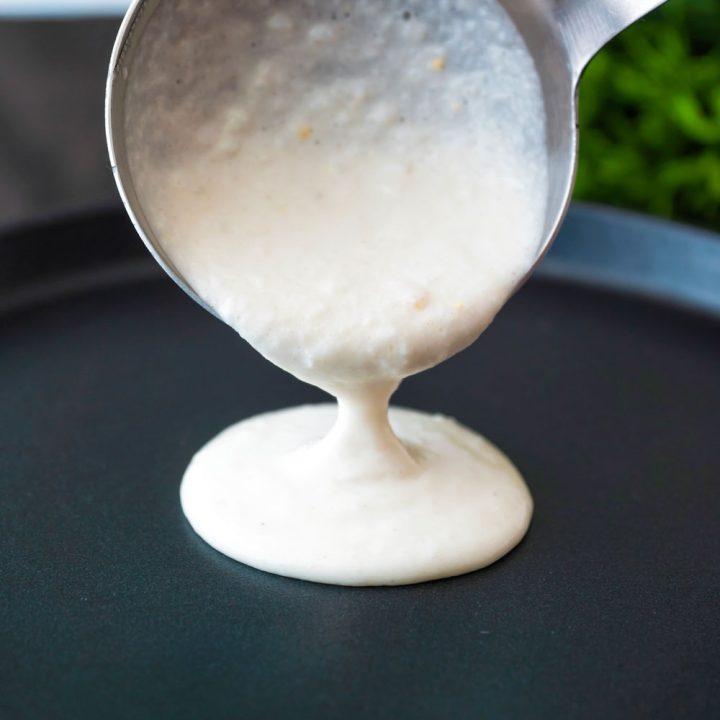
Dosa Batter Recipe
This foolproof dosa batter recipe uses the Instant Pot to take all the guesswork out of fermenting the batter. This batter will produce tasty, crispy dosa every time that you will love serving to your family and friends any time.
Ingredients
Instructions
First, wash and soak the rice and dal in separate bowls for up to 5 hours. When soaking the rice, add the fenugreek seeds to the same bowl.
Next, drain the water from the rice and dal. Add the urad dal to the grinder along with a tablespoon of water at a time, as needed, and grind into a smooth paste. If using a blender, you will have to clean the sides of the jar as you go.
Once ready, empty the paste into the Instant Pot.
Next, grind the rice in two batches. To start, add half the soaked rice with half a cup of poha and then add a tablespoon of water at a time, as needed, and grind into a slightly coarse batter. You will want to keep the coarse batter to yield crispy dosas.
Next, grind the second batch following the same process.
Once the rice is ready, transfer the mix into the Instant Pot, add the salt, and then mix the batter well. The consistency should be free flowing but not runny.
Finally, cover with a glass lid and set the Instant Pot on yogurt mode overnight, about 10 to 12 hours, or until the dough has doubled in size. The time can vary based on how cold it is.
After the dosa batter has doubled in size, you can use it to make dosas.
Here is our video recipe on how to make crispy dosas.
Notes
Refer to the notes shared throughout the post above
Recommended Products
As an Amazon Associate and member of other affiliate programs, I earn from qualifying purchases.
-
Organic Poha Thick 2 Pounds - Jiva
-
Fenugreek (Methi) Seeds
-
Morton Salt Regular Salt - 26 oz
-
Ninja Blender/Food Processor with Intelli-Sense Touchscreen, 1200-Watt Smart Sensor Base, Spiralizer, 72oz Pitcher, 64oz Bowl, and 24oz Cup (CT682SP)
-
Split Urad Dal
-
Ponni Parboiled Rice
-
Instant Pot Ultra 6 Qt 10-in-1

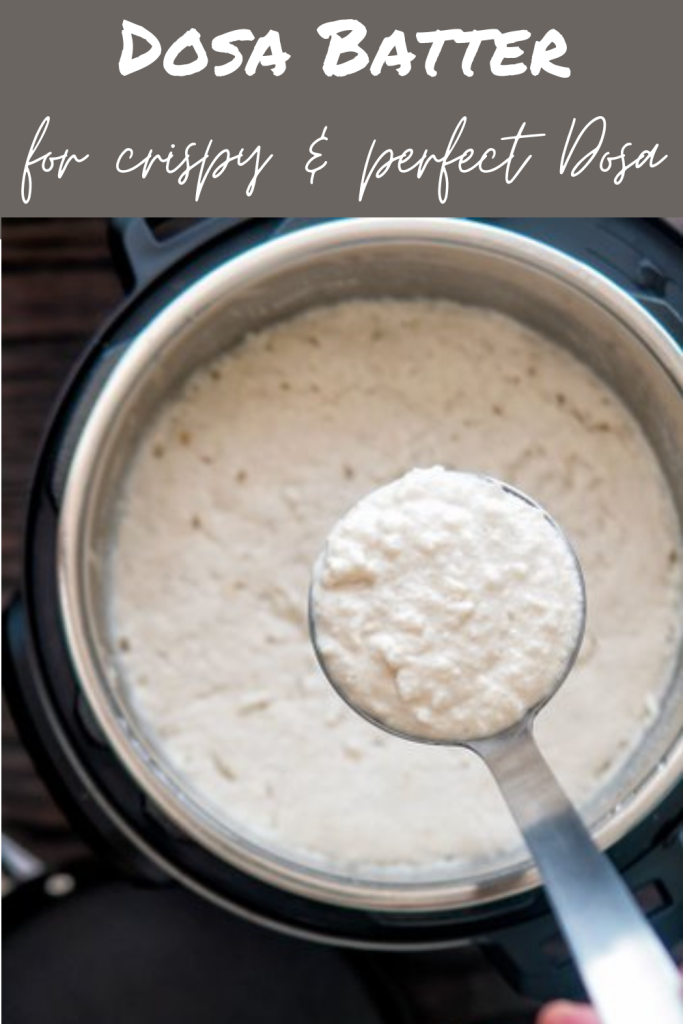
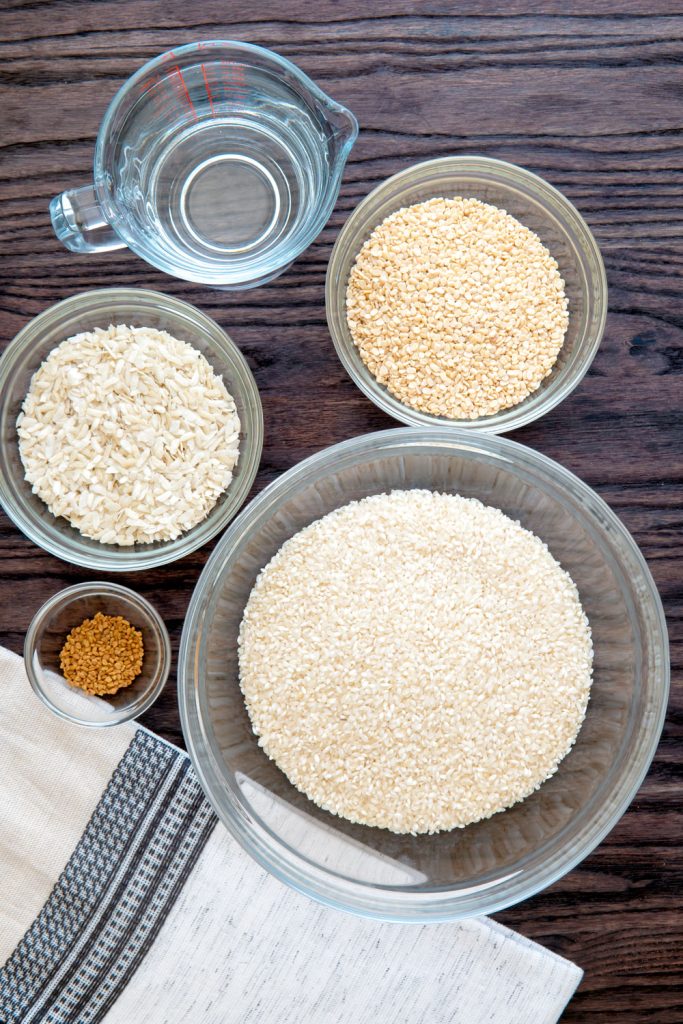
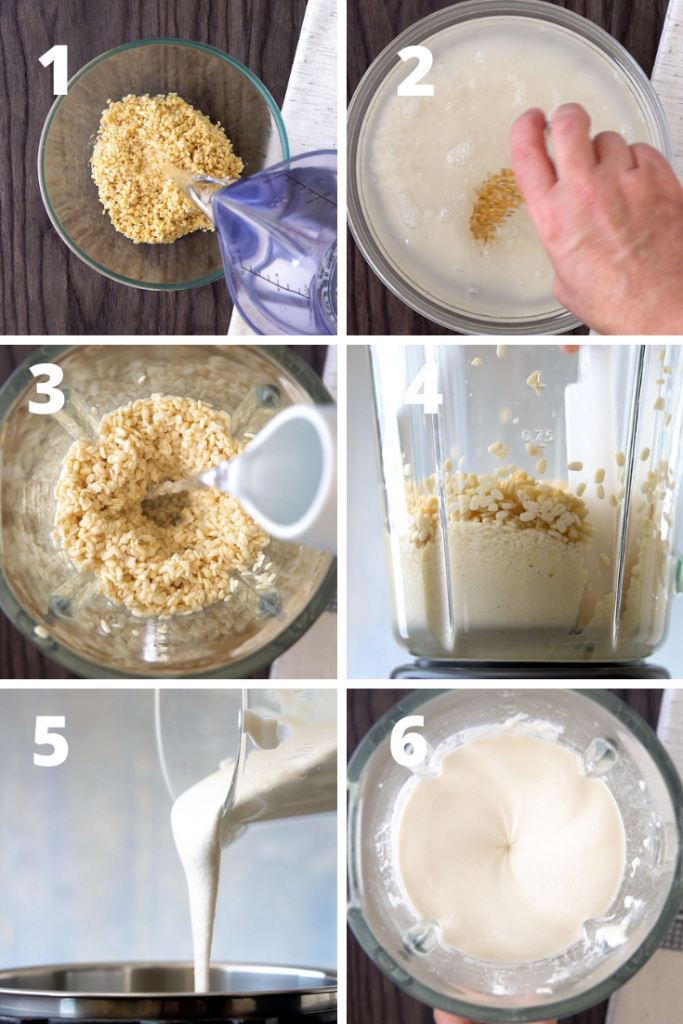
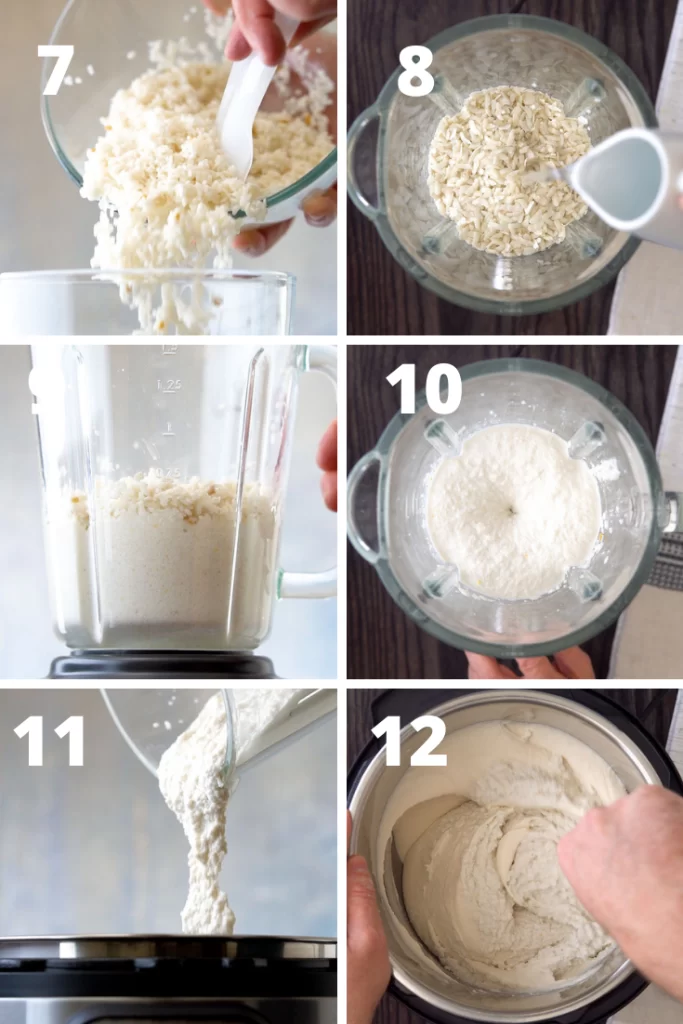

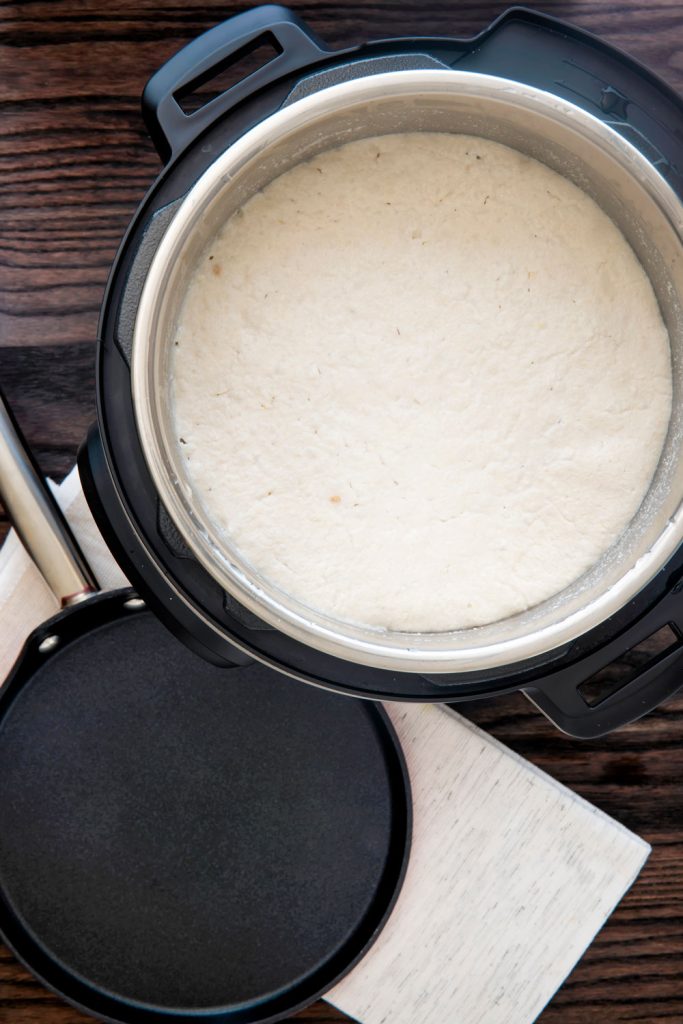
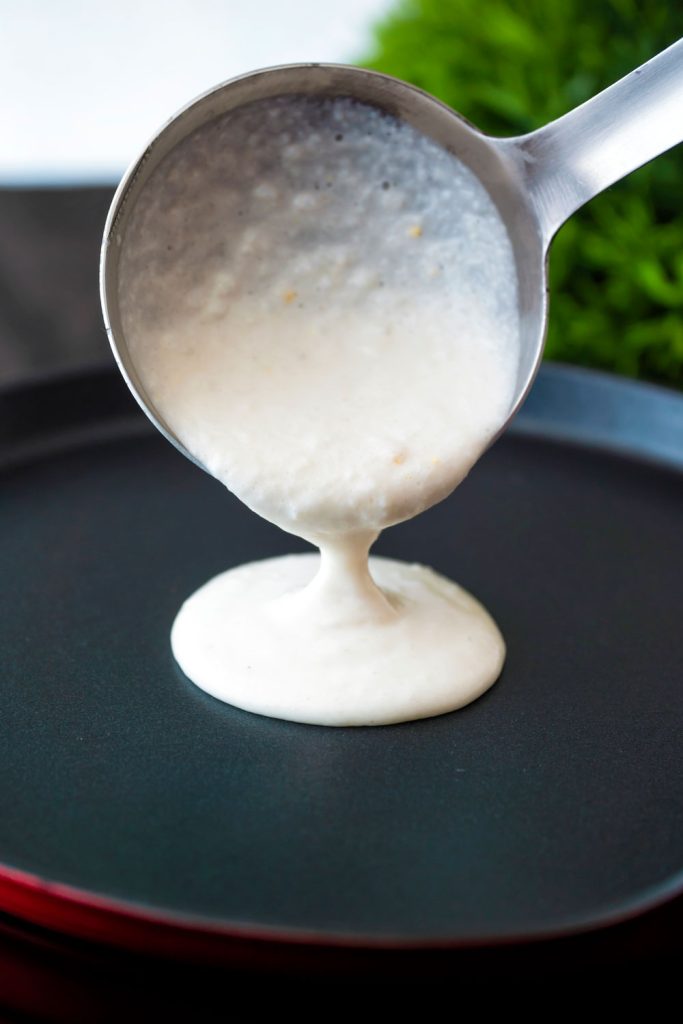




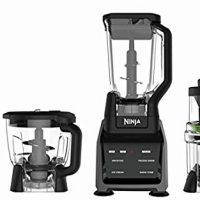


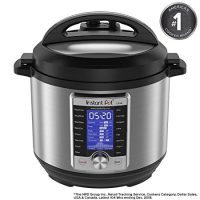
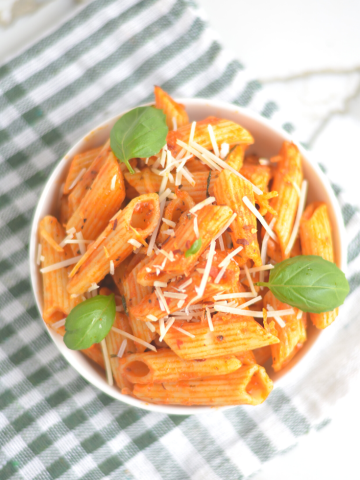
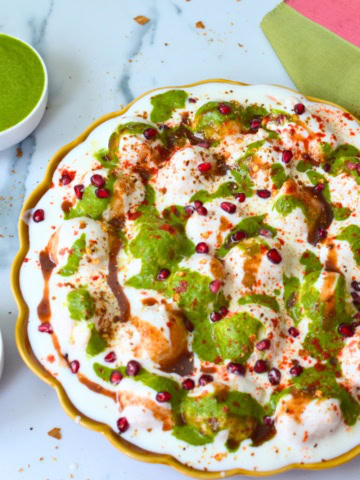
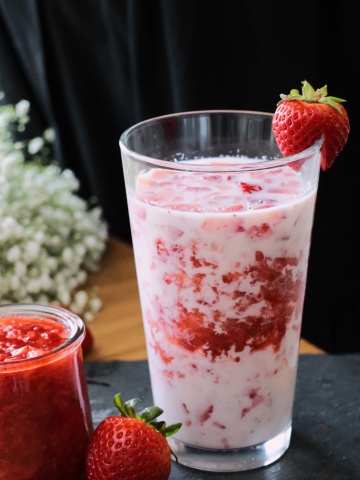
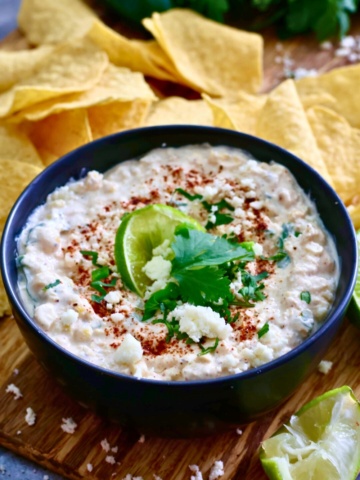
Sam says
Thank you, this was helpful!
Can the same method be used to make Idlis? More dal needs to be used of course, but should the dal and rice be blended separately? And do we still use the methi and poha quantities?
Appreciate your work!